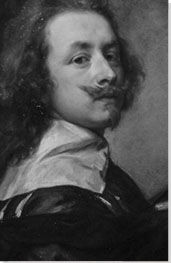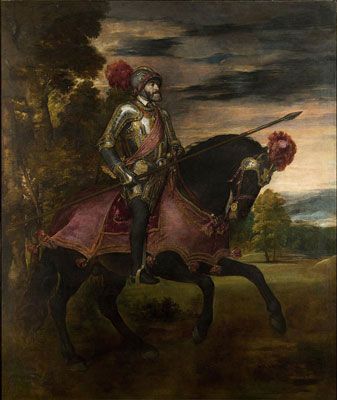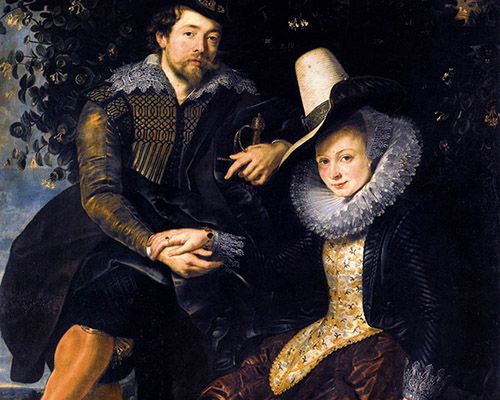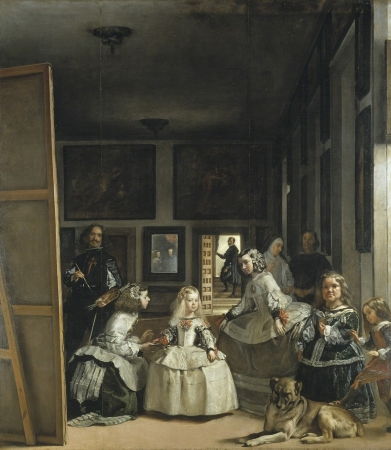Summary of Anthony Van Dyck
One of the most important painters of the 17th century, Anthony Van Dyck revolutionized portrait painting in Britain, moving it away from the stiff and formal conventions to a more relaxed and fluid aesthetic. He is best known for his elegant and, often intimate, paintings of European aristocracy, particularly Charles I of England and his court and through these he became the leading influence on portrait painting in Britain over the next 200 years, directly inspiring other famous portraitists such as Joshua Reynolds and Thomas Gainsborough. Van Dyck also played a role in helping to establish the Baroque movement. His religious and mythological scenes feature dramatic compositions alongside a very human sense of naturalism and intimacy. In taking this approach he rejected the influence of classical painting and sculpture even when this meant moving beyond the techniques of his mentor Peter Paul Rubens.
Accomplishments
- The artist often worked with bold hues, applying his paint quickly with loose and fluid brushstrokes. This is particularly apparent in his depiction of fabric and Van Dyck succeeded in capturing the sense of movement in clothing in a way few painters had before. Clothing became particularly integral to his English portraits and he shows a preference for flowing, informal wear as well as being one of the first portraitists to include exotic and fantasy dress in his work.
- Van Dyck introduced many new types of portraiture to Britain including: groups of children without their parents, double portraits showing friends or siblings, powerful men attended by their secretaries and images of the ruler on horseback. Although some of these ideas drew on the work of artists such as Titian, many of these novel compositions were pioneered by Van Dyck himself as he sought to expand the genre.
- Van Dyck's portraits were rendered with an unprecedented level of informality, although he did not lose sight of the importance of conveying the wealth and authority of his aristocratic sitters. His images flattered those he portrayed but he still managed to capture the essence of them, conveying elements of their personality through his nuanced use of expression, color and posture.
Important Art by Anthony Van Dyck
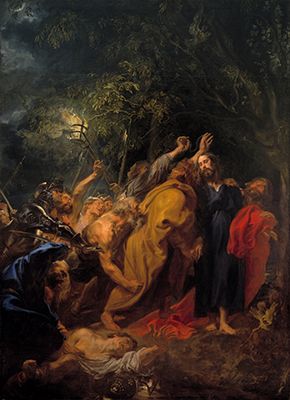
The Taking of Christ
This work depicts the moment of Christ's betrayal by his disciple Judas. Set in a wooded landscape, this biblically themed piece features a cluster of figures reaching out toward Christ who is pictured near the right side of the canvas dressed in a blue cloak. Judas is shown wearing a gold-brown robe and is positioned to the left of Christ, bestowing the kiss that completes his treachery. In the left foreground Christ's apostle Peter, with sword raised, is in the process of cutting off the ear of Malco, the High Priest's servant.
Many of Van Dyck's early paintings, created while still working with his mentor Peter Paul Rubens, featured religious scenes. We see here, in the way he has rendered the reactions of the crowd, an early example of Van Dyck's skill with depicting complex emotions and individual faces, techniques he later applied to his many portrait sitters. Rubens must have admired the work as it was a part of his personal collection and upon his death was purchased by King Felipe IV of Spain.
The scene is painted with a high degree of drama including the movement and jostle of the crowd as they reach out towards Christ, the violence of Peter towards the servant, and the dark turbulent sky overhead. This drama is further exaggerated by the low viewpoint and single light source, from a lantern held above the crowd. The lantern illuminates key parts of the canvas and draws the viewer, with the crowd, across the painting from left to right, ultimately focusing the attention on Christ's face. These compositional decisions along with Van Dyck's soft, sweeping brushstrokes provide an early example of the Baroque style of which he would become a master.
Oil on canvas - Collection of Museo del Prado, Madrid
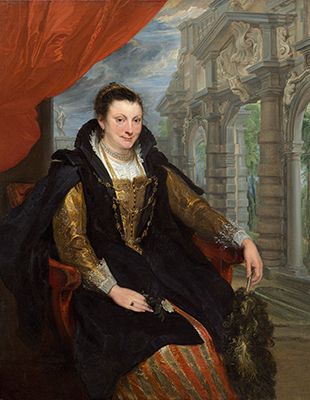
Isabella Brant
This portrait features Isabella Brant, the wife of Peter Paul Rubens. She is richly dressed and holds a fan made of ostrich feathers in her left hand and a white flower in her right, probably symbols of wealth, and of love or faith, respectively. In the top left corner is a partially visible red drape which art historian Christopher Brown identifies as included by the artist, "...to disguise the hiatus between foreground and background". The landscape behind the drape is dominated by an ornate architectural feature which is, according to Brown, "...a replica of the three-arched screen that Rubens had built to link his house and studio". This was part of Rubens's recent home expansion project to demonstrate his wealth and ability and the structure became an Antwerp landmark, its Italianate style one of the first examples in Northern Europe.
In the image Van Dyck contrasts soft, loose brushstrokes in some areas with immense detail in others and this can be seen in the intricate rendering of the lace on her cuffs and collar. For Van Dyck portraiture became a vehicle to express his affection for his sitters many of which were family, friends, or close acquaintances. Brant would have been an especially important subject as she was the wife of his mentor and this image was painted as a gift for Rubens and presented upon Van Dyke's departure from Rubens's tutelage. Isabella's face in the portrait appears to have been modelled on a chalk sketch of Brant completed by Rubens in the same year and this demonstrates the close exchange of ideas between the two in this period. Van Dyck has succeeded in capturing the vivacity and boldness of Brant's personality and the esteem in which he held her is clear in some of the details of the painting including the inclusion of a statue of Minerva, the goddess of wisdom in the background.
Oil on canvas - Collection of National Gallery of Art, Washington DC
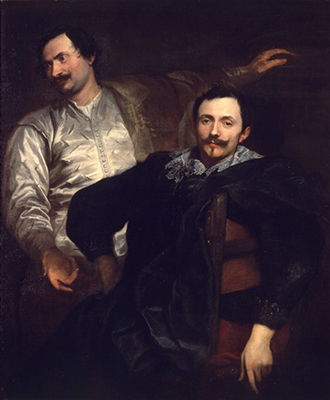
Lucas and Cornelis de Wael
Friends of Van Dyck, the artists Lucas and Cornelius de Wael depicted here, shared the bond of being from Antwerp. The brothers welcomed Van Dyck into their social circle when he first arrived in Genoa and this work was painted as a token of gratitude towards the brothers for their kindness and friendship. This painting is the first example of the Van Dyck double portrait, a composition which usually featured two men or women, who were often relatives or friends, painted together. Until this point double portraits usually depicted couples and Van Dyck, drawing on ideas from Raphael and Titian developed and popularized this style of friendship portrait. He is particularly known for introducing this and other new compositions to England, resulting in famous images such as Lord John Stuart and his Brother, Lord Bernard Stuart (1638).
The portrait is an excellent example of the informal nature of Van Dyck's paintings and the introduction of such poses and compositions into his work marks a departure from Rubens's portraits, which were usually more formally arranged and executed. The brother in the foreground, probably Lucas, sits sideways on his chair with his arm draped casually over its back, whilst his elder brother looks beyond the canvas, smiling to an unseen companion to his right. Their interactions and postures give the painting the feeling of a modern snapshot, an easy familiarity, which is in direct contrast to the careful staging of more traditional portraits of the period. The work also demonstrates Van Dyck's incorporation of the Baroque style into his portraits and here it is most clearly seen in the dramatic light source which shines onto the brothers' faces.
Oil on canvas - Capitoline Museums, Rome
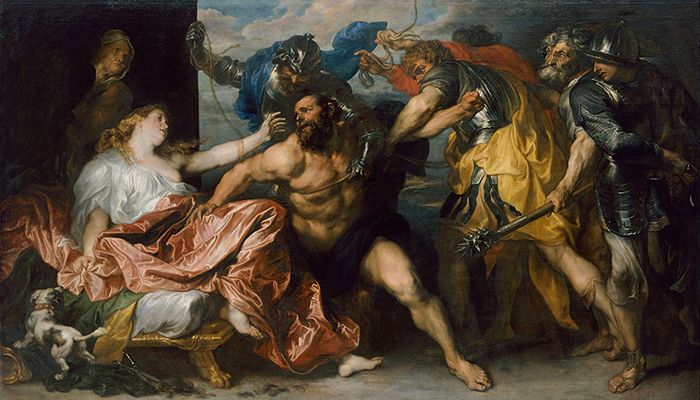
Samson and Delilah
A visualization of the Old Testament story of Samson and Delilah, in this painting Van Dyck depicts the moment after Samson has been betrayed. In the center foreground a barely clothed Samson struggles to resist the guards who are taking him to his inevitable death. This painting is Van Dyck's second recreation of the story and marks a maturity of his work. The first created between 1618 and 1620 featured a sleeping Samson in Delilah's lap as his hair is about to be cut. It is much more reserved and shows a greater influence of Rubens, who depicted the same subject.
In contrast, here Van Dyck captures the climax of the story, the moment when Samson has awakened and learned of Delilah's betrayal. He is racked with agony that is clear on both his face and in the contortions of his body as he tries to resist the guards and cling to his betrayer, who he still loves. The depiction of Delilah has also changed, from a brazen temptress to a woman in conflict, regretting her decision, as she reaches out to Sampson. It is certainly a more modern approach to the subject than his previous work and that of Rubens, and as Hans Vlieghe notes, Van Dyck succeeds in "...conveying the inherent tragedy of the drama in a much more penetrating way than Rubens".
Despite the increased emotional impact of the piece, the continued influence of Rubens can be seen in some of the details of the work particularly in the musculature of Sampson and the design of Delilah's dress. The colors, however, are bolder and more vibrant that Rubens's earlier work and this suggests the later influence of Titian on Van Dyck as well as his own increasing interest in mixing and experimenting with new tints. The painting shows Van Dyck's mastery of the dramatic and the intimacy and vulnerability with which he portrayed the figures broke with the classical tradition of many artists of the time.
Oil on canvas - Collection of Kunsthistorisches Museum, Vienna
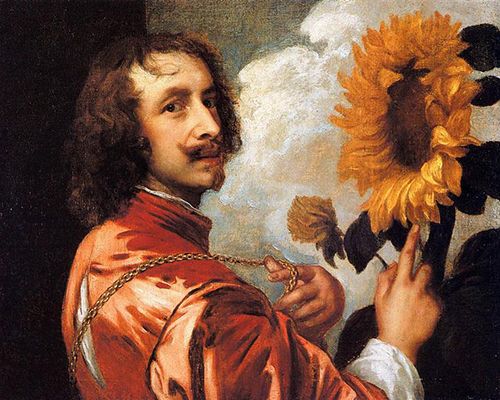
Self-portrait with a Sunflower
Van Dyck stands on the left of the canvas, opulently and fashionably clothed and looking out at the viewer. With his left hand he draws the viewer's attention to the gold chain he wears and with his right hand he points to a large yellow sunflower which dominates the right side of the canvas. This work is one of many self-portraits Van Dyck created during his career although it is more dramatically rendered than most. There is considerable debate regarding the meaning of the piece, particularly the inclusion of the sunflower.
In describing the painting, art historian and curator, Judy Egerton states, "it is not known whether Van Dyck painted his Self-portrait with a Sunflower for a patron (royal or noble), for a friend, for a lover or for himself. This is a highly sophisticated image in which the painter is primarily interested in himself. His rich dress, his valuable gold chain and his confident expression all proclaim him to be enjoying success: he basks in the presence of the glorious sunflower, which may well have a multiple meaning, symbolizing royal favour, his art and his fame." While the intended meaning may never be known, the work can certainly be viewed as a vehicle for Van Dyck to make a statement about his transition from child prodigy to respected, mature artist with a strong connection to English royalty. In the two years in which this painting was created, the English King both knighted the artist and gave him a gold medallion on a chain and this may be the chain which Van Dyck wears in the portrait.
Oil on canvas - Private Collection of the Duke of Westminster
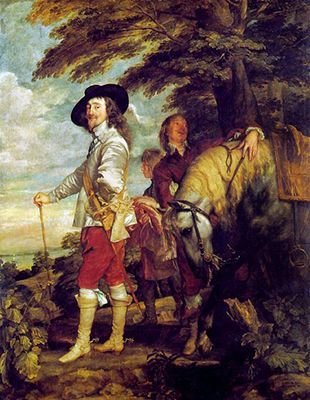
Le Roi á la Chasse
Le Roi á la Chasse, or Charles I at the Hunt, features the English King aristocratically attired and looking over his left shoulder at the viewer. Behind him are two attendants and his horse. The figures appear to be caught in a moment of contemplation and rest in a wooded landscape with a body of water just visible in the background. This work is an important example of the paintings Van Dyck created of the King and his family in his capacity as official court painter. While many of these portraits were more formal and functioned as a method to disseminate royal propaganda, this work is different. It portrays the King at ease, enjoying a moment of activity for his own pleasure. It also serves as a visual confirmation of the relationship between the artist and king in that Van Dyck was granted access to such a moment and felt empowered to render it on canvas.
Despite its informal setting and appearance, the piece is not completely without symbols of sovereignty. Charles is portrayed holding his gloves in his hand, a sign of his royal status and he is seen surveying his lands, possibly the Solent, with the Isle of Wight visible in the background. There is also a Latin inscription on the rock in the bottom right hand corner of the canvas and this translates as "Charles I, King of Great Britain". This was a bold and political statement at this period as Charles's father had only united the crowns of England and Scotland just over 30 years previously and the painting pre-dates the Act of Union of the two countries in 1707 by nearly 70 years.
The work draws on the equestrian portraits of Titian, but Van Dyck adds his own stylistic touches to the genre, showing the King dismounted and combining elements of the formal and informal in the composition. Van Dyck was an advocate of outdoor settings and images such as this one formed the foundations for the English School and had a significant influence on portraitists such as Thomas Gainsborough and Sir Joshua Reynolds.
Oil on canvas - Musée du Louvre, Paris
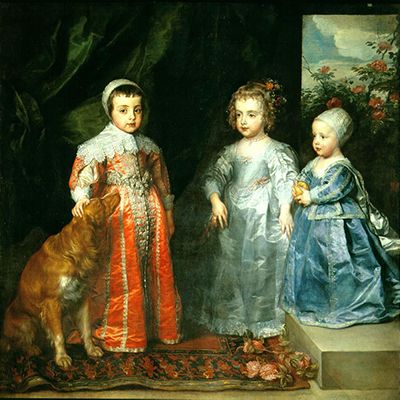
The Three Eldest Children of Charles I
The sitters in this image, from left to right are Prince Charles, Princess Mary, and James, the Duke of York. The family dog looks up at Charles while the boy absently pets his head as he gazes out towards the viewer, his authority and potential to rule clear, even at his young age and the other two children look to him reinforcing his status as the eldest. This work is one of many Van Dyck painted of children and dogs and in doing so he helped to elevate these subjects to the same level of artistic regard as adult sitters. Here, he clearly captures the unique personalities of the three children, highlighting both their status and their childhood innocence. The scene is one of a happy family and this sense of tranquility is supported by the glimpse of sky and garden in the background on the right-hand side of the scene. This is one of many carefully rendered details in the image including the interior elements of the room and the elaborate decoration on the clothing of the sitters.
The canvas was commissioned by Queen Henrietta Maria as a gift for her sister, but, interestingly, her husband King Charles I did not like it, taking issue with the fact that Van Dyck had depicted his eldest wearing a long skirt, a style common for young boys before they were 'breeched'. Charles may have seen this as emasculating in terms of royal propaganda, especially for Prince Charles who was next in line to the throne. At Charles's request Van Dyck painted a second portrait of the children later that year in which Prince Charles was wearing breeches. Van Dyke's accurate portrayal of children's clothing and his ability to capture the unpretentiousness of youth was in direct contrast to court painters elsewhere in Europe, particularly Velazquez, who painted, even very young, children dressed and posed as miniature adults.
Oil on canvas - Collection of Galleria Sabauda, Turin
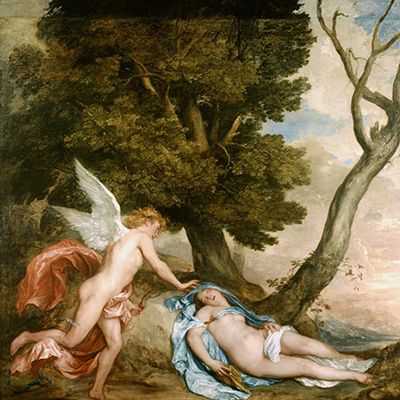
Cupid and Psyche
This mythological scene was one of several, similarly themed, paintings that Van Dyck made at the request of King Charles I, possibly to decorate the Queen's House at Greenwich. In the story, the goddess Venus was jealous of Psyche's beauty and set her a number of tasks including the transport of an unopened casket from Hades containing a small part of Prosperine's beauty. Curious, Psyche opened the box and sent herself into a deathlike sleep. This image shows her unconscious, about to be rescued by her husband Cupid, who later grants her immortality. Set against a dramatic landscape the tree on the left is in full bloom while the one on the right, under which Psyche lays, is barren, symbolically showing her near-death state. It is thought that the model for Psyche was Margaret Lemon, a woman who was also the artist's mistress for a brief time.
The subject was not unique to Van Dyck and many artists including Titian, had previously painted the myth. What distinguishes this work is that it embodies the Baroque style; beautifully romantic and rendered in soft brushstrokes, the work is awash in light and drama. It also lacks the grand classical quality of past versions and rather displays a sense of intimacy between the figures for which Van Dyck was known. Psyche is vulnerable in her sleeping state and Cupid, alive to the dangers of the situation rushes to her aid; their reunion is a tender one.
Oil on canvas - Royal Collection, United Kingdom
Biography of Anthony Van Dyck
Childhood and Education
Anthony Van Dyck was born, the seventh of 12 children, into a wealthy middle-class family in Antwerp; his father Franchois Van Dyck worked as a silk merchant. Van Dyck came from a family of artists including his paternal grandfather and his mother Maria Cuyper, who died when he was only eight years old and was a skilled embroiderer.
Early Training
Taking advantage of the guild system in place in Antwerp during his childhood, Van Dyck began an apprenticeship with the artist Hendrick van Balen at the age of ten. Although the exact length of time is unknown, Van Dyck spent a few years living and training with van Balen before he left to set up his own studio whilst still in his teens. This was quite an achievement as it was done before obtaining the status of master painter which he did in 1618, when he officially joined Antwerp's Guild of Saint Luke. It was, perhaps, because of these early successes that he was referred to as the "Mozart of painting".
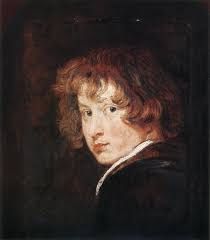
Sometime during this period Van Dyck met his fellow countryman, artist Peter Paul Rubens. Van Dyck was so eager to learn from him that around 1617 he gave up his own studio to become Rubens's chief assistant and this resulted in a mutually beneficial relationship for both artists. Van Dyck helped Rubens with many important commissions, whilst Rubens taught Van Dyck much about the artistic process. Rubens's stylistic influence can be seen throughout Van Dyck's work, although Van Dyck never embraced the classical style which Rubens preferred.
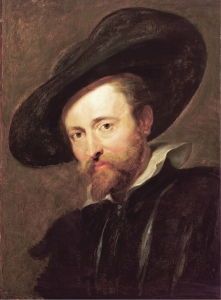
During his time in Rubens's studio, Van Dyck's family life was in upheaval. His once prosperous family's reputation began to decline after a scandal involving his father and a woman who defamed his father's character and threatened him with violence in what is generally believed to be a relationship turned sour. In 1616 two of Van Dyck's brothers-in-law went to court seeking control of the family money claiming that the artist's father was mismanaging it. Van Dyck brought his own suit asking the court to appoint someone to manage the funds rather than his brothers-in-law and another one, later, to have the court return from his brothers-in-law what was rightfully owed him and his younger siblings. Consequently, the relationship with Rubens went beyond that of mentor and student. Rubens, who was 22 years older than Van Dyck became a father figure to him, filling a void that was missing in his own family after the loss of his mother and a disintegrating relationship with his father.
Mature Period
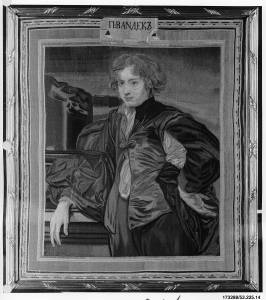
Having already begun to establish a good name for himself in Antwerp, Van Dyck traveled to England in 1620. In doing this he sought to advance his career by emerging from Rubens's shadow as well as distancing himself from his family. It has also been speculated that he may have wanted to leave Antwerp because he had made a woman pregnant; a fact he did not acknowledge until recognizing his illegitimate daughter, Maria-Theresia, in his deathbed will.
While in England he was appointed as court painter for King James I and he began to focus on portrait painting rather than his earlier religious themed works. Van Dyck, however, did not find life at court to his liking, perhaps due to his reserved nature and strong Catholic beliefs. It was also in England he suffered his first bout of what would be a lifelong battle with depression. His desire to leave England was complicated by his commitment to the court; however an eight-month leave for travel was arranged in 1621 by Lord Arundel, who, along with his wife, would become key patrons of the artist.
While Van Dyck was only supposed to travel for eight months, he did not, in fact, return to England for 11 years. He went, first, to Antwerp and then traveled to Italy in November 1621, staying in Genoa and then moving to Rome. Here, he made many sketches that became known as his Italian Sketchbook (1621-27) which included drawings of paintings he studied, especially those of Titian. During his trip he also spent time in Bologna, Florence, and Venice where he met up with Lady Arundel and with whom he traveled to both Mantua and Milan. Her plan to convince him to return to King James's court failed and he stayed in Italy after she sailed back to England.
His success as an artist grew and he began to travel with increasing numbers of servants and adopted a more flamboyant way of dress which was described by one of his earliest biographers, Giovanni Pietro Bellori, as including, "...gold chains, [and] feathered hats". While in Italy he also traveled to Palermo where he met the, then 96 years-old, artist Sofonisba Anguissola of whom he painted a portrait and described as, "...very quick witted and kind".
In 1627 family issues brought Van Dyck back to Antwerp. These included the death of his sister and another court case to prevent his brothers-in-law from taking over what was left of his family inheritance. Despite these financial issues, by this point his own wealth was substantial and this allowed him to build an impressive art collection of his own which included a number of paintings by Titian. While in Antwerp he also registered to be a member of the Confraternity of Bachelors, a prestigious religious group and became court painter to the Archduchess Isabella. This was only possible as King James had died and Van Dyck was thereby released from his obligations in the English court.
Late Period
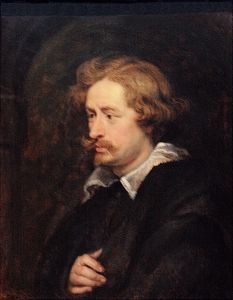
One area of focus for Van Dyck in the later years of his career began in the 1630s when, in partnership with publisher Martin van den Enden, he began work on his Iconography series, a curated selection of printed portraits, some based on past works and others specially created for the project. This can now be viewed as an album of the artist's friends and important people of Antwerp in the period.
In 1632, Van Dyck returned to England where he was made official court painter for King Charles I and his wife Queen Henrietta Maria. In this role he painted a large number of portraits of the King and Queen as well as of their children and he developed a very close relationship with the King who regularly visited his apartment. This was a period of growing unrest in England and these internal divisions led to the Civil War in 1648 and ultimately to the execution of Charles I. Van Dyck's paintings served as a propaganda tool for the Stuart monarchy, presenting the royal family as powerful but also human. This unique combination of formal state portraiture and relaxed family domesticity is clearly visible in his first royal commission Charles I and his wife Henrietta Maria with their eldest children (1633).
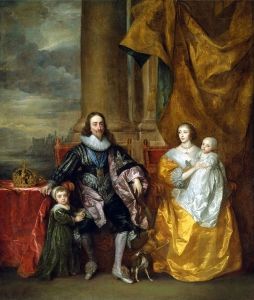
Van Dyck was also more popular and social during his second stay in London and he began an ill-fated affair with a courtesan Margaret Lemon who was highly jealous of the attention he received from other women and as biographer Robin Blake explains was rumored to have, "...threatened, even attempted, to bite off Van Dyck's most useful digit, his thumb, if he was ever unfaithful".
Perhaps unexpectedly, at the height of his popularity and appeal, Van Dyck made the decision to settle down and in February 1640 he married Mary Ruthven one of the Queen's ladies-in-waiting. Despite this happy relationship, Van Dyck's depression manifested itself again and began to deepen. The death of his mentor Peter Paul Rubens later that year weighed on the artist and caused him to briefly return to Antwerp. His failing health also prevented him getting the commission to decorate the Louvre for King Louis XIII of France and while he traveled to Paris in 1641, he was too ill to meet with the king.
Upon his return to London, he was so ill that a concerned King Charles I offered a £300 reward to any doctor that could cure Van Dyck. Despite his poor health he was able to witness the birth of his daughter Justiniana on December 1, 1641. Two days later he made his will and six days after that, hours after his daughter was baptized, he died at the age of 42. While his loss was felt by many, the most notable expression of grief came from the King who ordered his tomb to be engraved with the message: "Who, while he lived, gave to many immortal life".
The Legacy of Anthony Van Dyck

Van Dyck's greatest legacy was in portrait painting where he pushed the boundaries of what a portrait could be and modernized it for generations to come. He is particularly noted for introducing a unique informality of composition to his portraits and for his flattering renderings which succeeded in losing none of the individuality of the sitter. Van Dyck also had an impact through his choice and treatment of clothing, bringing the idea of fantasy dress in portraits to Britain. The artist lends his name to the Van Dyck beard, Van Dyck collar, and Van Dyke suit, which were fashionable in the early 17th century and were immortalized through his paintings. These items found renewed popularity in the 18th century in imitation of his works and were worn to masquerades and in later portraits, most notably in Gainsborough's The Blue Boy (1779).
According to critic Keith Thomas, "nearly all the great 18th-century portraitists, from Pompeo Batoni and Allan Ramsay to Thomas Gainsborough and Joshua Reynolds, copied Van Dyck's costumes, poses and compositions". Furthermore, the intimate way he captured the essence of his sitters helped to lay the foundation for the approach of contemporary artists including John Currin and Lucian Freud.
Influences and Connections

-
![Titian]() Titian
Titian - Jan Brueghel the Younger
- Hans Holbein the Younger
- Jan Roos
- Cornelius de Wael
-
![Peter Paul Rubens]() Peter Paul Rubens
Peter Paul Rubens - Lady Arundel
- Kenelm Digby
- Martin van den Enden
- George Villiers
-
![Thomas Gainsborough]() Thomas Gainsborough
Thomas Gainsborough -
![Vincent van Gogh]() Vincent van Gogh
Vincent van Gogh -
![Joshua Reynolds]() Joshua Reynolds
Joshua Reynolds - Hans Holbein the Younger
- Lady Arundel
- Kenelm Digby
- Martin van den Enden
- George Villiers
- Lucas Vosterman
